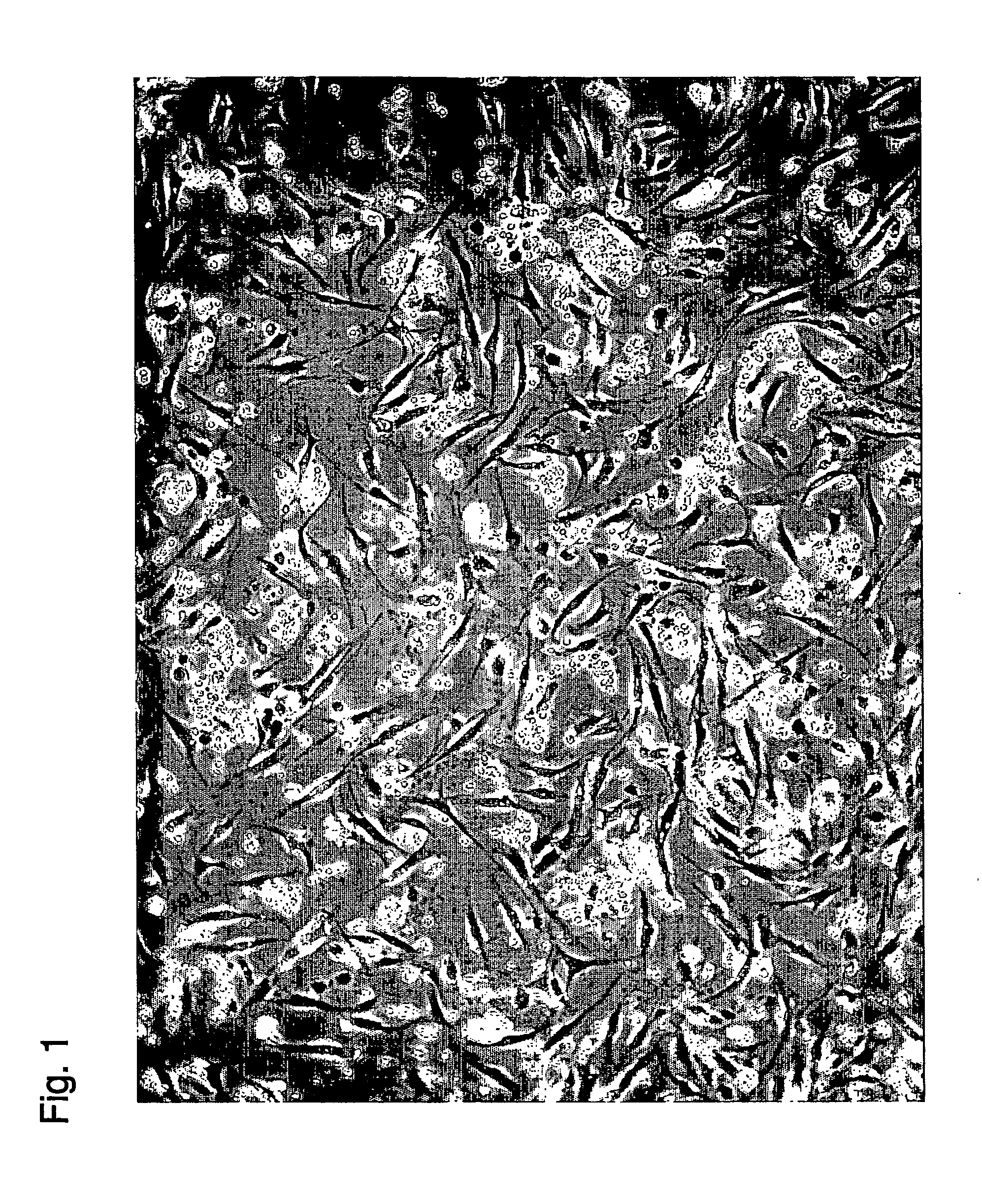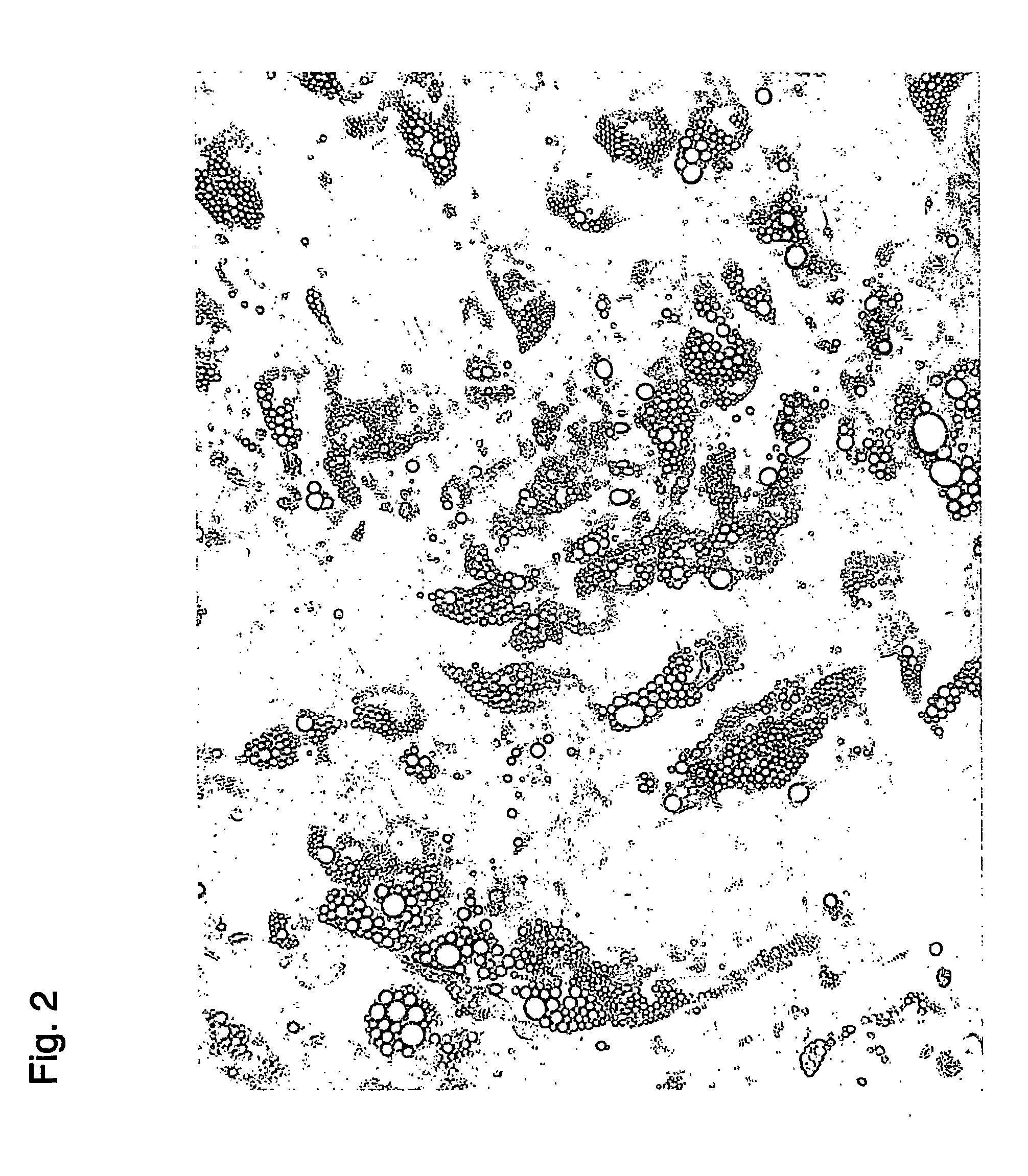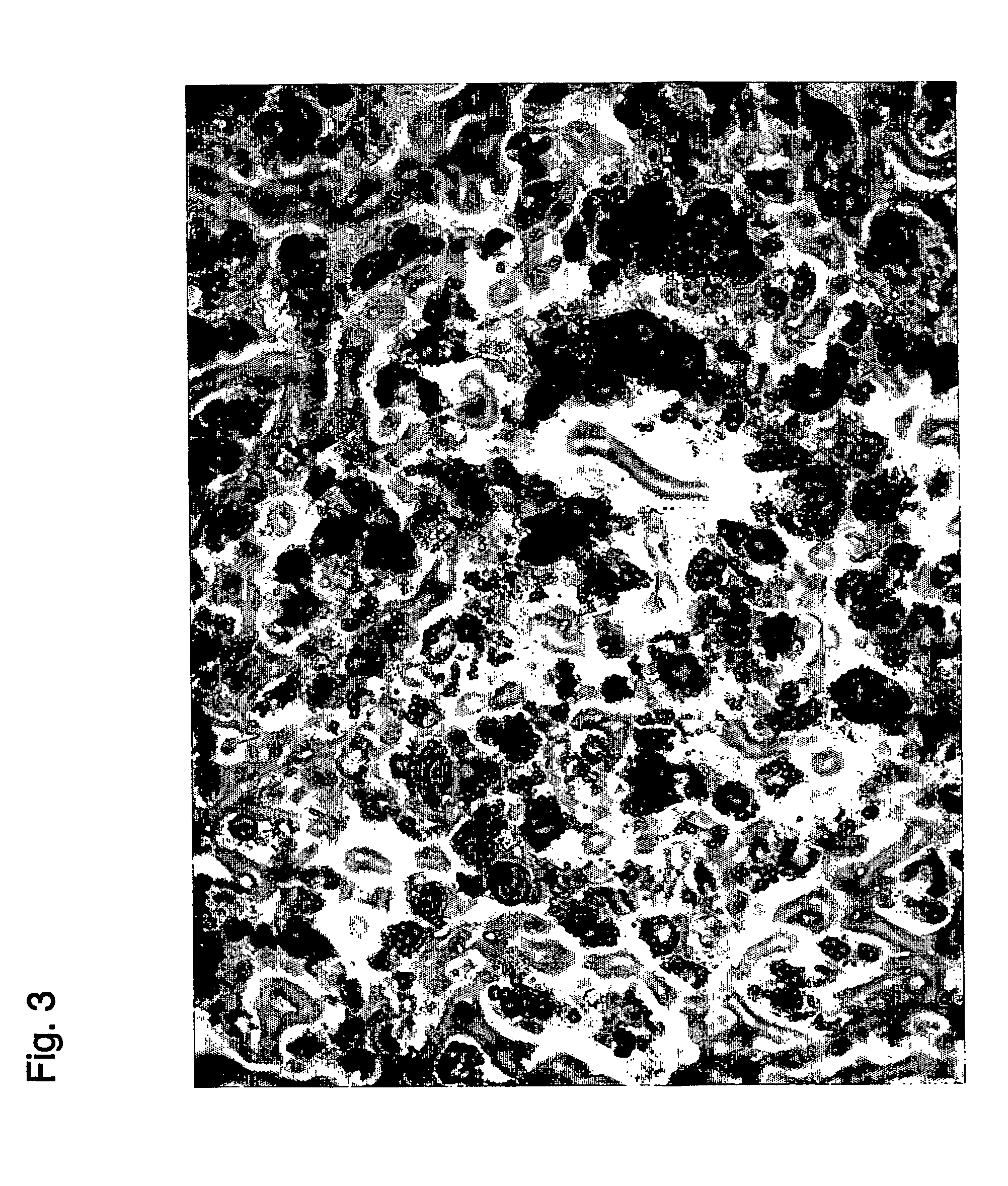Method and system for preparing stem cells from fat tissue
- Summary
- Abstract
- Description
- Claims
- Application Information
AI Technical Summary
Benefits of technology
Problems solved by technology
Method used
Image
Examples
example 1
Preparation of an Aspirate of Liposuction
[0259] An excess amount of Tumescent solution (saline containing 0.0001% adrenalin), which exceeds the amount of liposuction to be aspirated prior to the liposuction operation, was infused into hypodermic fat layer (tumescent method), and thereafter cannulae having 2-3 mm of inner diameter (made of metal with aspirator) are used for the liposuction operation. Liposuction operations are well known in the art, and for example, can be referred to in Biyo Seikei Shujutsu Practice 2 (Cosmetic Operation Practice 2), ed. Masanari ICHIDA, Ryusaburo TANINO, and Yoshiaki HOSAKA, published by BUNKODO, pp. 429-469, which is incorporated herein by reference in its entirety.
[0260] Aspirated fat was washed with saline. About five to ten liters of washed aspirate was generated, and the initial one to two liters thereof containing abundant cellular materials were used for the following processes.
example 2
Preparation of a Stem Cell Suspension from an Aspirate of Liposuction
[0261] The aspirates taken were processed as follows using either of the two methods to prepare stem cell suspension. The following two methods do not require processes using enzymes such as collagenases, the methods are distinct from conventional methods and stem cells from fat tissue prepared by conventional methods in that there is no contamination of enzymes such as collagenases.
[0262] (I) Preparation Method 1
[0263] 1) A liquid portion of an aspirate from liposuction (typically, about 2 to 4 liters) was centrifuged at 400×g for 10 minutes.
[0264] 2) The supernatant was discarded. Note that as the precipitated cells were likely to float, an aspirator was used to carefully perform suction without damaging the cells.
[0265] 3) The pelleted cells (mostly, erythrocytes) were transferred to several 50-ml polypropylene tubes, followed by centrifugation (400×g, 5 min).
[0266] 4) The supernatant was suctioned out. A ...
example 3
Characterization of Recovered Stem Cells
[0279] The stem cells recovered in Example 2 were characterized by the following procedure using FACS.
[0280] About 5 ml of cell suspension was washed twice with staining medium (SM; PBS supplemented with 0.5% bovine serum albumin and 0.05% NaN3). The cells were counted as required.
[0281] Labeled antibodies (label(s): phycoerythrin (PE), allophycocyannin (APC), and / or fluorescein isothiocyanate (FITC)) was added to about 1 to 10×106 cells / ml cell suspension to a final concentration of 0.001 to 0.1 μg / ml.
[0282] The mixture was incubated on ice for 30 minutes, followed by washing the cells. The concentration of the cell floating solution was adjusted with SM to about 5×105 cells / ml.
[0283] FACS Vantage (Becton Dickinson) was used. The label of the antibody was used as a marker to analyze the expression of each CD protein in isolated stem cells. As a result, it was revealed that stem cells, which were derived from a liquid portion of an aspira...
PUM
| Property | Measurement | Unit |
|---|---|---|
| specific gravity | aaaaa | aaaaa |
| specific gravity | aaaaa | aaaaa |
| specific gravity | aaaaa | aaaaa |
Abstract
Description
Claims
Application Information
 Login to View More
Login to View More - R&D
- Intellectual Property
- Life Sciences
- Materials
- Tech Scout
- Unparalleled Data Quality
- Higher Quality Content
- 60% Fewer Hallucinations
Browse by: Latest US Patents, China's latest patents, Technical Efficacy Thesaurus, Application Domain, Technology Topic, Popular Technical Reports.
© 2025 PatSnap. All rights reserved.Legal|Privacy policy|Modern Slavery Act Transparency Statement|Sitemap|About US| Contact US: help@patsnap.com



